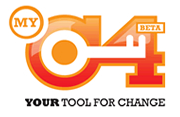 Today was another conference call by Kiva with its lenders.
Today was another conference call by Kiva with its lenders.
Kiva informed about the situation of Fundación San Miguel Arcángel (FSMA), a field partner in the Dominican Republic, who is unable to repay lenders and will soon cease operations.
On the question, why Kiva does provide fewer translations, Kiva explained that they have a hard time to find enough volunteers to translate all texts. Another factor is the limited availability of engineering time to improve features related to translation.
Kiva decided in August to not provide translations to English for some loans. In this “non-translation experiment” Kiva will try to measure the effect of omitting the translation on the funding rate and speed.
In the discussion on the currency risk Kiva asked for feedback from the lenders on which information should be presented. One suggestion was to make the information that a currency risk may occur more eye-catching in the loan selection. Consensus was that currency risk information is more important for “power” lenders than occasional, infrequent lenders.
One third of the time of the engineers is spend on MFI and volunteer related issues. One third is spent on lender related (interface, features) issues. One third is spend on maintenance, bug-fixing, system issues.
Conversion rate: Of 100 people visiting the website, 8 make a loan.
40 percent of the people who put something (loans) in the basket, do not complete the check-out.

 Last year in December
Last year in December 
